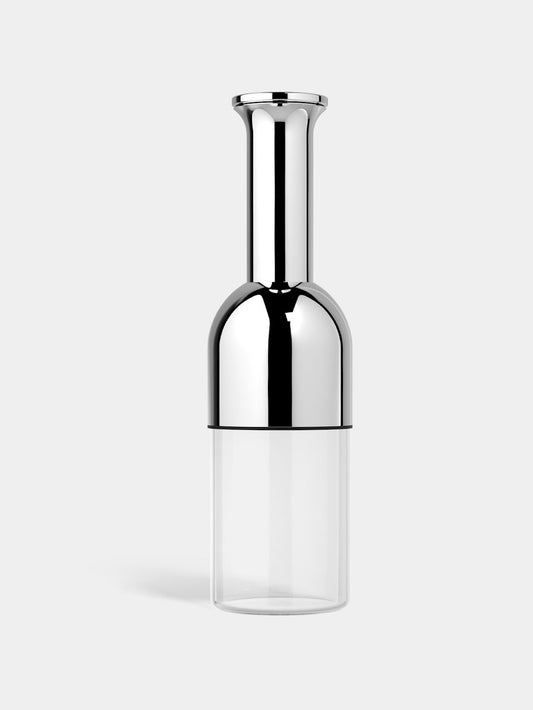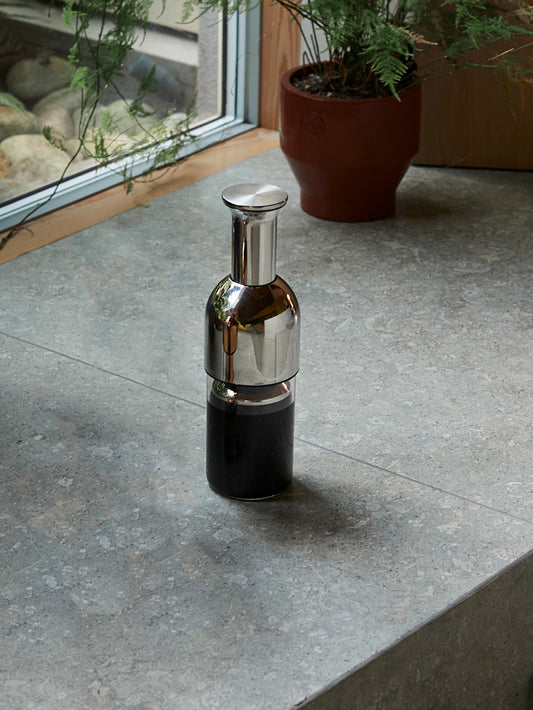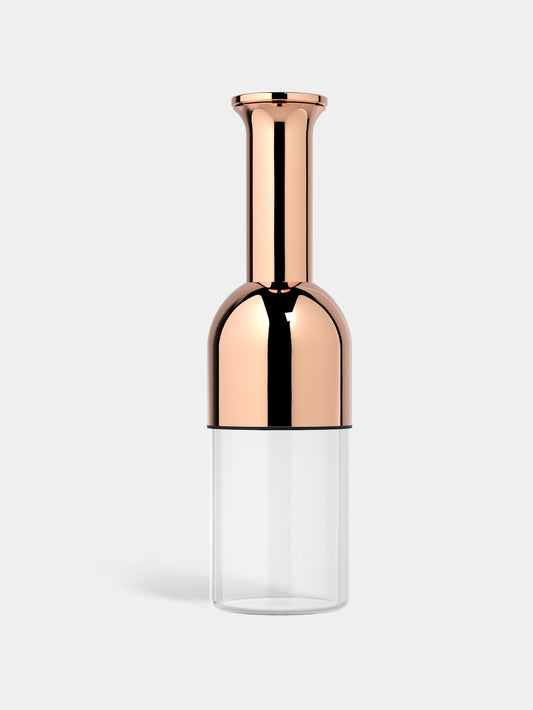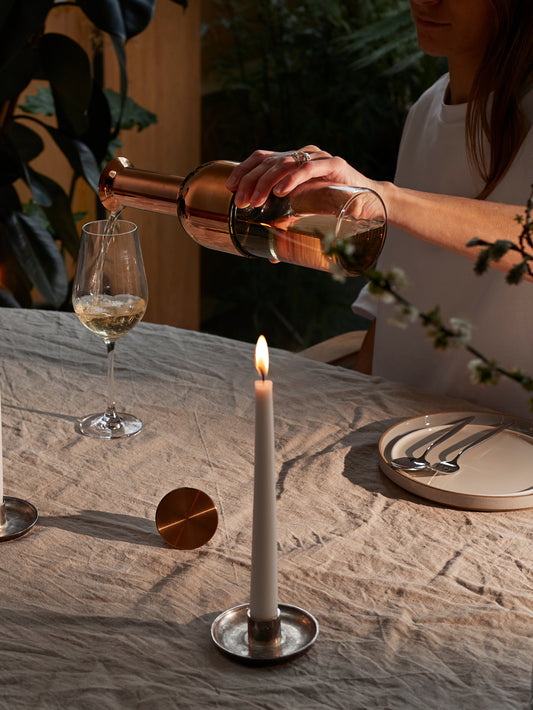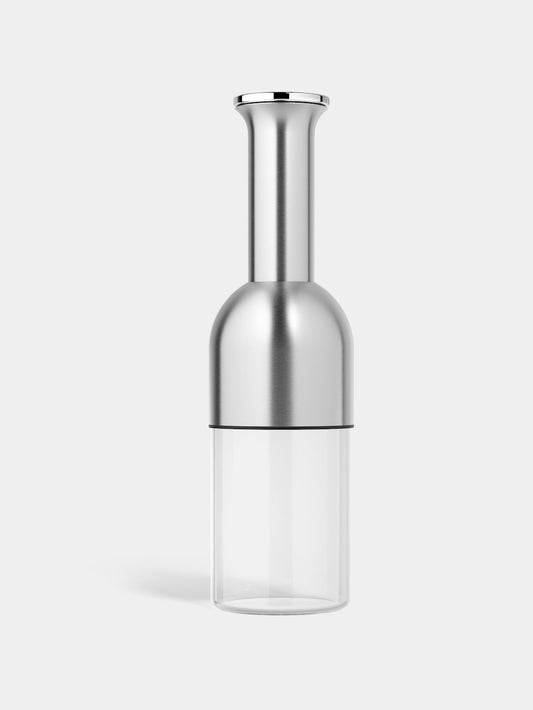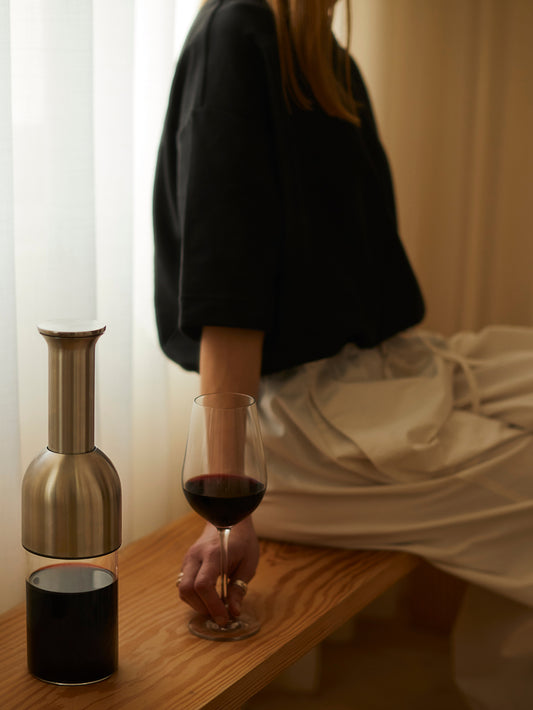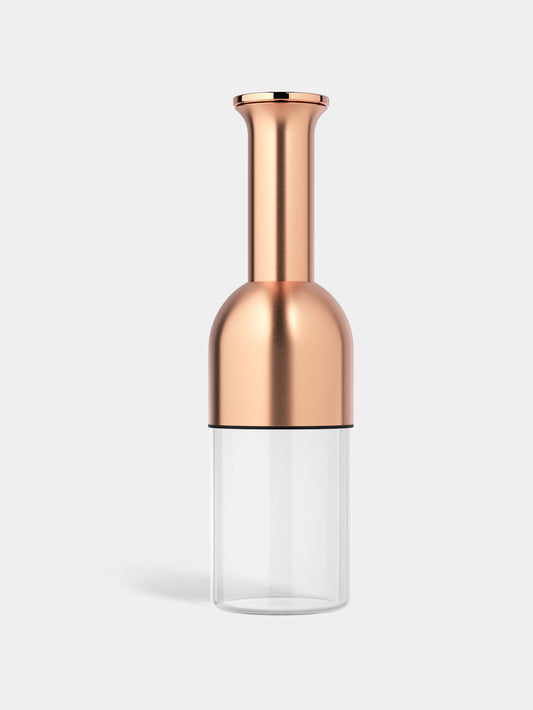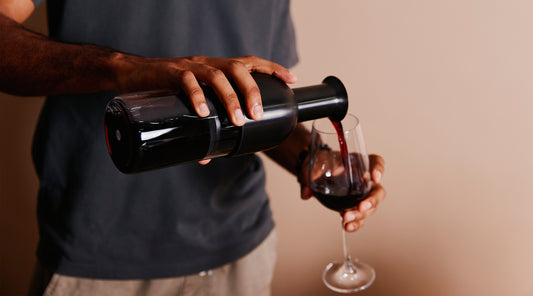Do you enjoy the swirl-sniff-sip ritual of wine-tasting? The new year is a great time to delve into the flavour profiles of different wines to create some delicious pairings for the year ahead. To help you savour every glassful, we have put together a list of the less well-known wine-tasting techniques that professionals use – retro nasal breathing or a sniff of your forearm. Read our top tips and then have some fun working out the different flavours and aromas you come across.
You’ve probably seen wine enthusiasts swirling, sniffing and sipping their wine to better understand its flavour. But there are some less well-known techniques which professionals use to help them appraise different wines. We’re sharing our top-five favourites here.
1. Breathe into it.
In wine-tasting, air has an important role to play. It’s why connoisseurs swirl and slurp – they’re bringing oxygen into the wine because it helps them identify the complex components of flavour. And the way you breathe can help with this unravelling too.
Retro-nasal breathing may sound like a yoga skill, but it’s actually a technique to help you get more from your glass of wine. Your mouth and nose are connected by a passage which is full of olfactory receptors, and these receptors mean you notice aromas when you breathe in, but also when you breathe out.
To fully activate these receptors, take a breath in, then have a sip of wine and hold it in your mouth for a moment before swallowing and exhaling with your mouth closed. As you exhale, you should experience an influx of flavours – almost as if you’re tasting them – as your olfactory system gets to work.
2. Change the size of your sip
Almost a decade ago, research scientists at the University of Naples discovered that the amount of wine you hold in your mouth with each sip has a huge impact on the flavours you can taste.
This is down to chemistry. The amount of liquid in your mouth changes the number of volatiles released when the wine interacts with your saliva, which gives emphasis to different flavours. The study found that berries and citrus were more easily detected in large sips, while small sips highlighted orchard fruit and floral notes.
So, what does that mean for the way you taste? The best thing to do is mix it up. Experiment with different sip sizes to see if you can tease out different notes in the wine.
3. Reset your nose
If you’ve ever wondered why your own home doesn’t smell of anything to you, but your neighbours’ does, this is down to “nose blindness”. Your brain automatically reduces your awareness of smells that you’re routinely exposed to.
On a smaller scale, this can happen when you’re tasting wine, so if you’ve been working your senses especially hard, it’s a good idea to occasionally reset yourself. When it comes to taste, we do this by reaching for a plain cracker or a sip of water. But if you’re looking to reset your nose, a discreet sniff of something neutral like your forearm should be enough to get you ready to tell your Burgundy from your Bordeaux once again.
4. Learn some new wine vocab
When it comes to wine tasting, there are a lot of traditional words used to describe the different flavours and aromas. And you can Google “wine flavour wheel” to see the most commonly used. If you’d like to increase your wine vocab, we suggest picking the three most distinctive flavours and aromas and then re-tasting your wine to see if you can refine those descriptions still further. This should help embed the flavour profile of the wine into your memory.
5. Decant, decant, decant
If you’re drinking a fine wine – especially one that has benefited from age (or, conversely, is a little too young) – you’ll notice that it changes between the first glass poured from a bottle and the last. This is often down to a change in temperature as the wine acclimatises to the room after being stored in a fridge or cellar. As the wine warms, a greater spectrum of flavours and aromas are released into the glass.
But another way to enhance the flavour is by allowing oxygen from the air to get to work. And with fine red and white still wines, decanting is the most effective way to do this. With red wines, especially Burgundy, decanting will help disperse any smells associated with its reductive winemaking, and also help soften tannins to make young, full-bodied, structured wines more drinkable. Complex fine white wine can also benefit from decanting – but do this just before serving so that it keeps its freshness and flavour.
If you’re lucky enough to be opening a very old vintage wine, be cautious about decanting because extremely mature wine tends to peak quickly before the flavours begin to fade. Once a wine has reached its second decade, decant carefully just before serving to protect its complexity.
Why not try applying these wine-tasting tips with a deep, dark Saperavi? Read our guide to Black Wine and discover our favourite Saperavi from Georgia and Australia.



